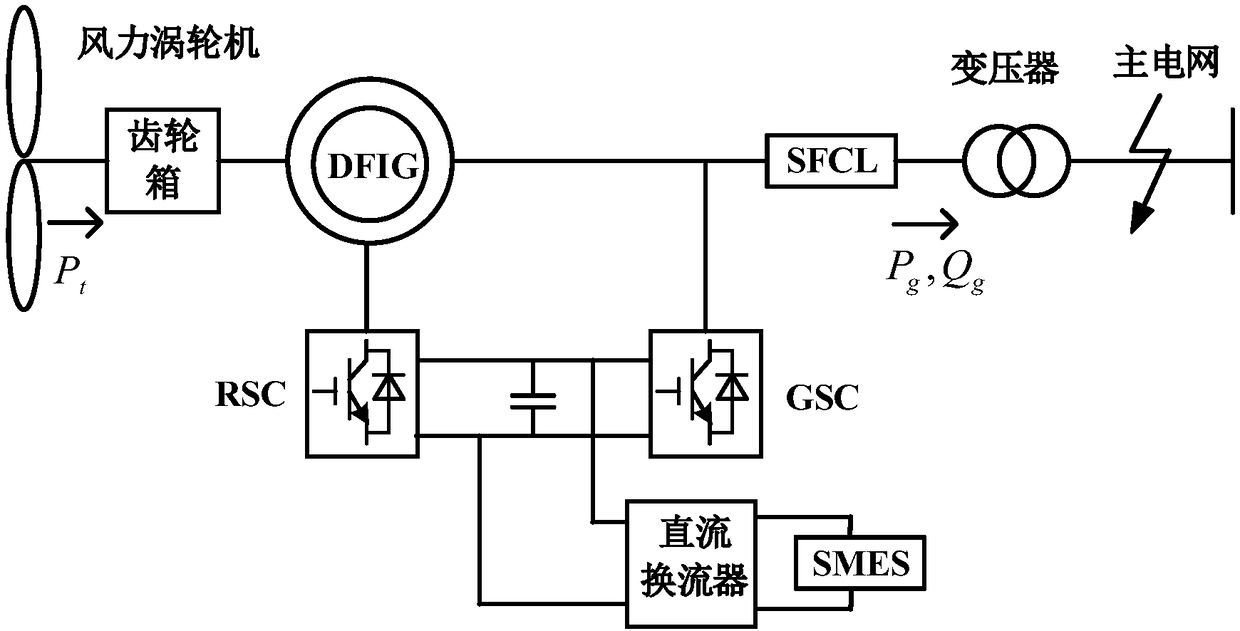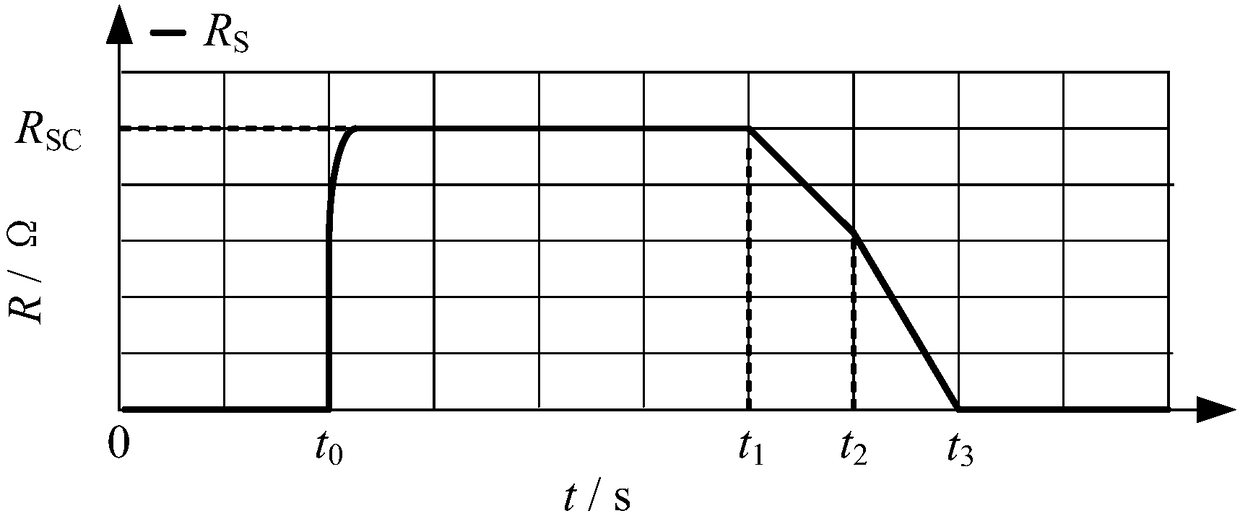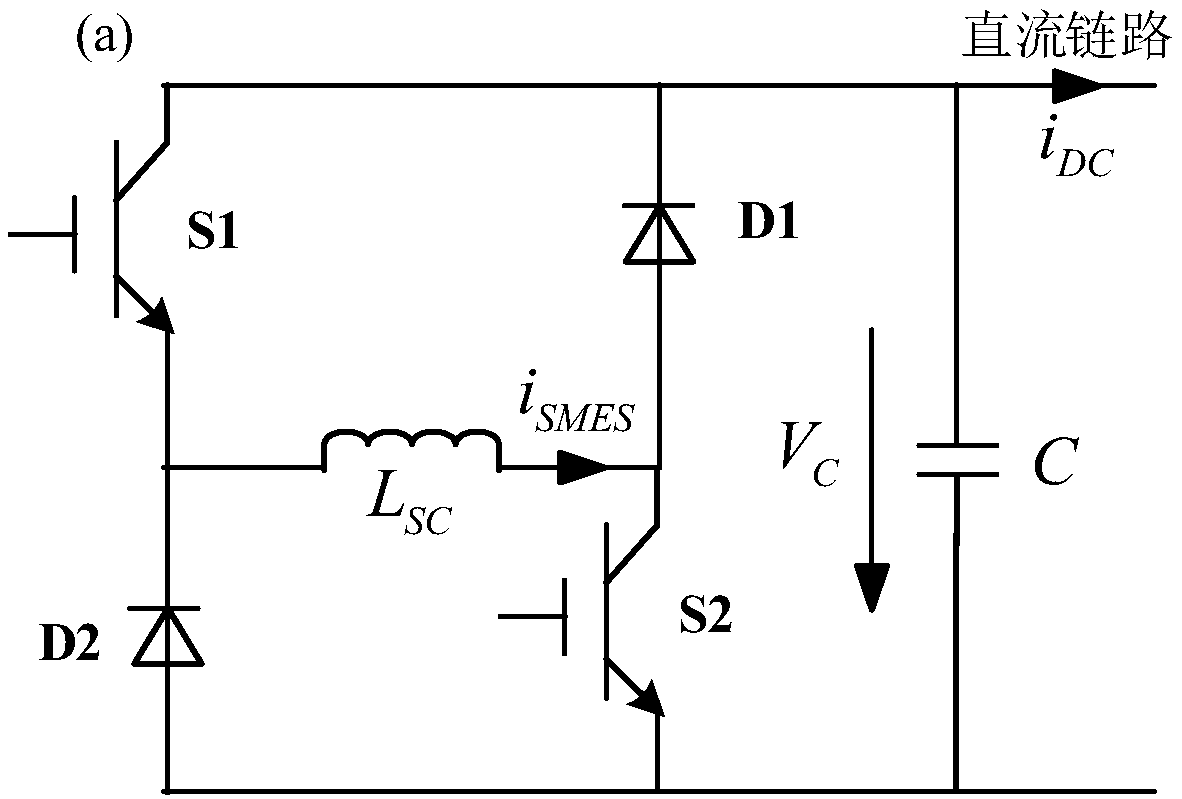System and method for improving FRT (fault ride-though) capability of DFIG-WT (doubly fed induction generator based wind turbine) on basis of SFCL (superconducting fault current limiter) and SMES (superconducting magnetic energy storage)
A double-fed fan and fault ride-through technology, which is applied in the field of power system and automation, can solve problems such as limited effects, and achieve the effects of suppressing fluctuations, unbalanced power and electromagnetic torque oscillation, and efficient fault ride-through support
- Summary
- Abstract
- Description
- Claims
- Application Information
AI Technical Summary
Problems solved by technology
Method used
Image
Examples
Embodiment Construction
[0041] Embodiments of the present invention will be described in detail below in conjunction with the accompanying drawings.
[0042] This embodiment is achieved through the following technical solutions:
[0043] like figure 1 As shown, a system based on SFCL and SMES to improve the fault ride-through capability of DFIGs is based on typical DFIGs, and a resistive superconducting fault current limiter is installed on the stator side of DFIGs. A superconducting magnetic energy storage device is installed on the DC link via a bidirectional DC / DC converter. In the figure, RSC is the rotor-side converter, and GSC is the grid-side converter.
[0044] A fault ride-through method of DFIG based on SFCL and SMES, in order to limit the stator and rotor fault current, suppress the change of DFIG terminal voltage and DC link voltage during the fault ride-through period of DFIG, and at the same time stabilize the Unbalanced power and electromagnetic torque oscillations play an active ro...
PUM
 Login to View More
Login to View More Abstract
Description
Claims
Application Information
 Login to View More
Login to View More - R&D
- Intellectual Property
- Life Sciences
- Materials
- Tech Scout
- Unparalleled Data Quality
- Higher Quality Content
- 60% Fewer Hallucinations
Browse by: Latest US Patents, China's latest patents, Technical Efficacy Thesaurus, Application Domain, Technology Topic, Popular Technical Reports.
© 2025 PatSnap. All rights reserved.Legal|Privacy policy|Modern Slavery Act Transparency Statement|Sitemap|About US| Contact US: help@patsnap.com



